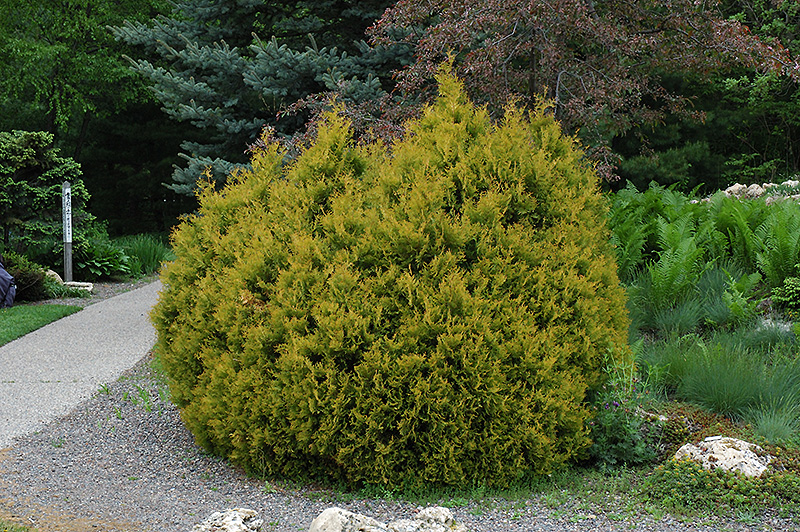>> Home
Rheingold Arborvitae
Thuja occidentalis 'Rheingold'
Height: 5 feet
Spread: 4 feet
Sunlight:
![]()
![]()
Hardiness Zone: 3
Other Names: Eastern White Cedar
Description:
A compact pyramidal evergreen shrub with dense golden spray-like foliage turning yellowish-brown in winter; ideal size for home gardens and shrub borders, fuzzy foliage has a notably fine texture; best with some sun, protect from drying winds
Ornamental Features
Rheingold Arborvitae is a dwarf conifer which is primarily valued in the landscape or garden for its decidedly oval form. It has attractive gold evergreen foliage. The scale-like sprays of foliage are highly ornamental and turn coppery-bronze in the fall, which persists throughout the winter.
Landscape Attributes
Rheingold Arborvitae is a dense multi-stemmed evergreen shrub with a shapely oval form. It lends an extremely fine and delicate texture to the landscape composition which can make it a great accent feature on this basis alone.
This is a relatively low maintenance shrub. When pruning is necessary, it is recommended to only trim back the new growth of the current season, other than to remove any dieback. It has no significant negative characteristics.
Rheingold Arborvitae is recommended for the following landscape applications;
- Mass Planting
- Hedges/Screening
- General Garden Use
Planting & Growing
Rheingold Arborvitae will grow to be about 5 feet tall at maturity, with a spread of 4 feet. It tends to fill out right to the ground and therefore doesn't necessarily require facer plants in front, and is suitable for planting under power lines. It grows at a slow rate, and under ideal conditions can be expected to live for approximately 30 years.
This shrub does best in full sun to partial shade. It prefers to grow in average to moist conditions, and shouldn't be allowed to dry out. It is not particular as to soil type or pH. It is somewhat tolerant of urban pollution, and will benefit from being planted in a relatively sheltered location. Consider applying a thick mulch around the root zone in winter to protect it in exposed locations or colder microclimates. This is a selection of a native North American species.
